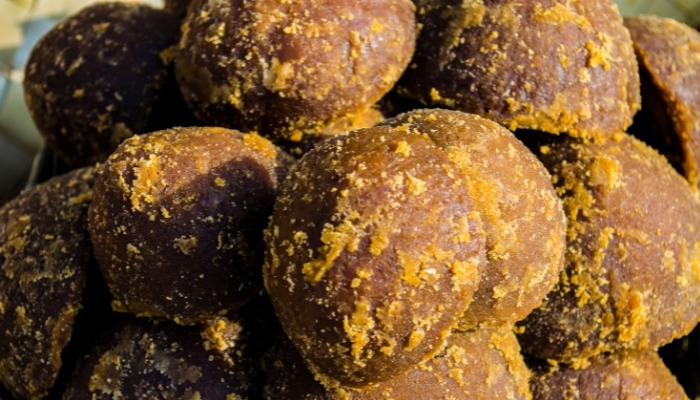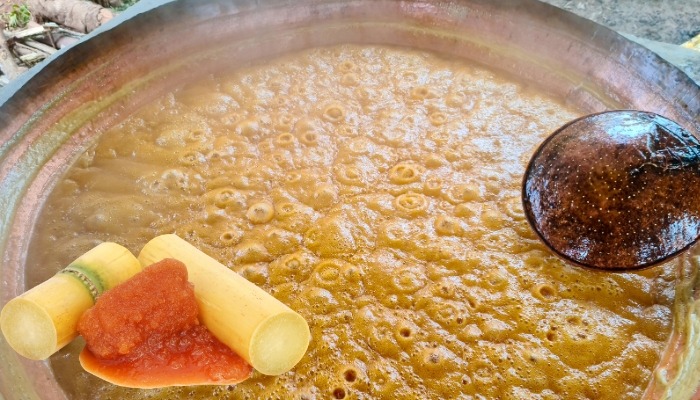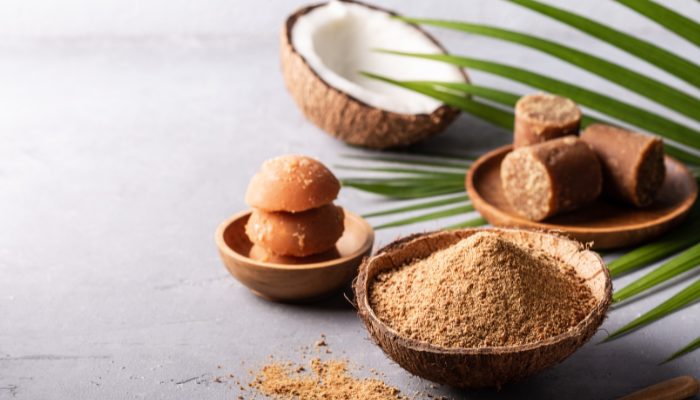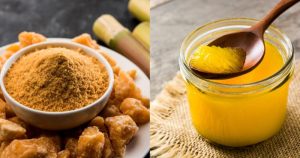

Jaggery, a natural sweetener derived from sugarcane, palm sap, or other plant sources, comes in various forms, each with its unique flavor and culinary applications. In this guide, we’ll explore the Different types of jaggery available in India and delve into their specific uses in traditional and modern cuisines.
Palm jaggery, obtained from the sap of palm trees, boasts a distinct earthy flavor. Its dark color and rich taste make it a popular choice in South Indian dishes. Due to its high mineral content, including iron and potassium, palm jaggery is often used to enhance the nutritional value of sweets like “modak” during festivals like Ganesh Chaturthi.

Sugarcane jaggery, one of the most common varieties, is extracted from sugarcane juice. Its golden hue and sweet, caramel-like taste make it a versatile ingredient in both sweet and savory dishes. It’s used in preparing classics like “gur wale chawal” and “gajak.” Additionally, its natural sweetness makes it a favored alternative to refined sugar in beverages like “sharbat.”

Date palm jaggery, derived from the sap of date palm trees, has a unique and intense flavor profile. Its dark color and strong taste lend themselves well to traditional sweets like “patisha,” which is popular during festivals in North India. Date palm jaggery is also believed to have cooling properties, making it suitable for desserts in warmer months.
Coconut jaggery, made from coconut sap, is known for its rich, caramelized flavor with a hint of coconut essence. It’s widely used in coastal regions of India to prepare delectable sweets like “kuzhi paniyaram” and “kadalai mittai.” The natural sweetness of coconut jaggery eliminates the need for additional sweeteners in recipes.

Karupatti, or palm jaggery powder, is a convenient option for those seeking the benefits of jaggery in a powdered form. It’s used to add depth of flavor to traditional dishes like “adhirasam” and “payasam.” Karupatti’s texture and concentrated sweetness make it an excellent addition to spice mixes and marinades.
The world of jaggery is a treasure trove of flavors and nutritional benefits, with each type offering a unique culinary experience. From the earthy tones of palm jaggery to the caramel sweetness of sugarcane jaggery, these variants enrich the diverse tapestry of Indian cuisine. As you embark on your culinary journey, don’t hesitate to explore the various types of jaggery and incorporate them into your favorite recipes, preserving tradition while embracing innovation.




Copyright © 2024 Desigud.in All Rights Reserved